WHITE HEAT
White Heat is a gripping crime film that delves into the dark and intense world of a notorious criminal named Cody Jarrett. With a volatile personality and a cunning mind, Cody leads his gang in a series of daring heists while evading the relentless pursuit of law enforcement. As the pressure builds and the stakes escalate, Cody’s dangerous obsession with his mother becomes a catalyst for explosive events that will test his loyalty, sanity, and the very limits of his criminal empire. Brace yourself for a thrilling journey into the mind of a charismatic yet unhinged antihero.
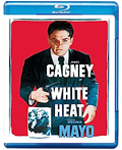
Director: Raoul Walsh
Year: 1949
Stars: James Cagney, Edmond O’Brien, Virginia Mayo
PLOT
The film opens with a train robbery executed by Cody and his gang, showcasing their meticulous planning and ruthless efficiency. However, Cody’s psychological instability is immediately apparent. He suffers from severe headaches and has a close, almost unsettling, relationship with his mother, Ma Jarrett (played by Margaret Wycherly). This unique bond becomes a recurring motif throughout the narrative.
As Cody and his gang continue their crime spree, the relentless pursuit of law enforcement, led by determined Treasury Department investigator Hank Fallon (played by Edmond O’Brien), becomes a constant threat. Fallon goes undercover as Vic Pardo, a fellow inmate, to gather information on Cody’s operations. This sets the stage for a dangerous game of cat and mouse between the two men, as Cody senses that there’s more to Pardo than meets the eye.

Meanwhile, Cody’s right-hand man, Big Ed Somers (played by Steve Cochran), becomes increasingly discontented with Cody’s erratic behavior and lust for power. Big Ed plots to betray Cody and take over the gang, forming an alliance with another member, Roy Parker (played by Paul Guilfoyle), to carry out his plan.
As the pressure mounts and Cody’s headaches worsen, he decides to commit himself to a psychiatric hospital as a cover, all while planning one final, audacious heist. However, his secret is discovered by Ma Jarrett (played by Virginia Mayo), who inadvertently reveals it to Big Ed. Sensing an opportunity, Big Ed arranges for Cody’s capture and plans to take control of the gang.
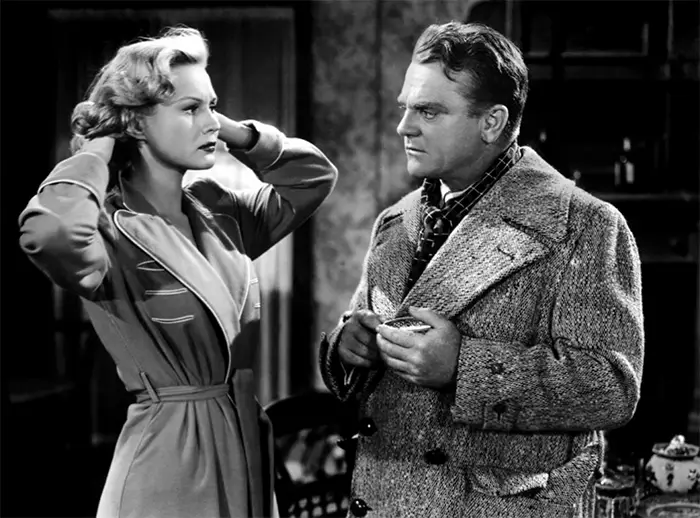
Cody’s capture leads to an explosive climax when he is imprisoned alongside Pardo, who reveals his true identity as Hank Fallon. With tensions high and the prison on the brink of chaos, Cody engineers an elaborate escape plan, orchestrating a violent prison riot in the process. In a climactic scene, Cody scales the top of a massive gas storage tank, where he battles both his enemies and his own inner demons.

Amidst the chaos, Cody’s ultimate fate is sealed in a fiery and memorable conclusion. True to his explosive nature, he meets his demise in a blaze of glory, ensuring that he will forever be remembered as a legendary figure in the annals of crime.
JAMES CAGNEY'S PERFORMANCE
James Cagney’s performance in “White Heat” is widely regarded as one of his most iconic roles. It showcases his remarkable talent and cemented his status as one of the greatest actors of his generation. In his portrayal of Cody Jarrett, Cagney delivers a mesmerizing and unforgettable performance that brings the complex and volatile character to life.

From the moment Cagney appears on screen, his presence commands attention. His physicality and energy are immediately apparent as he effortlessly embodies the intense and unpredictable nature of Cody. Cagney’s mannerisms, such as his jerky movements, clenched fists, and piercing gaze, effectively convey the character’s simmering aggression and internal turmoil.
One of the most notable aspects of Cagney’s performance is his mastery of Cody’s distinct vocal delivery. His voice fluctuates between moments of calm control and explosive outbursts, effectively capturing the character’s inner demons and shifting emotional states. The iconic line, “Made it, Ma! Top of the world!” is delivered with such fervor and intensity that it has become one of the film’s most memorable moments, forever etched in cinema history.
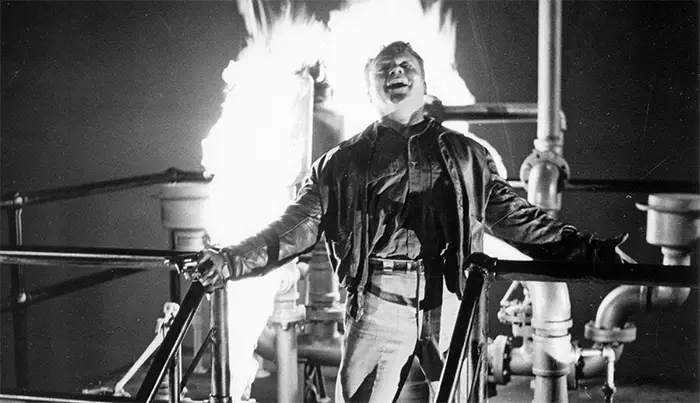
Cagney’s ability to convey Cody’s vulnerability is equally impressive. Despite his outward bravado and ruthlessness, Cagney infuses the character with glimpses of emotional fragility. In scenes with his mother, played by Margaret Wycherly, Cagney expertly portrays Cody’s deep, twisted attachment, oscillating between childlike dependence and fierce protectiveness. These moments humanize Cody, making him a complex and multidimensional character rather than a one-dimensional villain.
Another noteworthy aspect of Cagney’s performance is his skill in balancing the character’s menacing qualities with a magnetic charm. Despite Cody’s violent tendencies and criminal activities, Cagney injects moments of charisma and wit into his portrayal, making him strangely captivating. This dichotomy draws the audience in and adds layers of complexity to the character, making him more than just a typical gangster.
Furthermore, Cagney’s physicality in the film is exceptional. Whether engaging in intense confrontations, executing the meticulous planning of heists, or navigating the film’s action sequences, Cagney displays a level of agility and precision that further amplifies the impact of his performance. His commanding presence dominates the screen, captivating viewers and holding their attention throughout.
Cagney’s performance in “White Heat” has had a lasting impact on the portrayal of criminals in cinema. His ability to convey the dark and intricate aspects of Cody Jarrett’s psyche paved the way for more nuanced and complex antiheroes in the crime genre. His performance serves as a benchmark, influencing subsequent performances and setting the standard for how to portray morally ambiguous characters convincingly.
It is worth noting that Cagney’s work in “White Heat” was informed by his extensive experience in the gangster film genre. Having previously starred in classics such as “The Public Enemy” and “Angels with Dirty Faces,” Cagney brought a wealth of knowledge and expertise to his portrayal of Cody Jarrett. His understanding of the genre and its conventions undoubtedly contributed to the authenticity and depth of his performance.
James Cagney’s performance in “White Heat” is a tour de force that showcases his range, intensity, and undeniable talent. His embodiment of Cody Jarrett is a masterclass in acting, with every gesture, line delivery, and expression contributing to the portrayal of a complex and captivating character. Cagney’s performance remains a shining example of his immense contribution to the art of cinema and solidifies his place as a true legend of the silver screen.
THEMES
“White Heat” explores several themes throughout its narrative, providing a thought-provoking and introspective examination of the criminal underworld and the human psyche. Some of the prominent themes in the film include:
Obsession and Identity
The movie delves into the theme of obsession, particularly through the character of Cody Jarrett. Cody’s deep attachment to his mother and his unwavering desire for power and control drive his actions and decisions. His obsession ultimately leads to his downfall, highlighting the destructive nature of unchecked fixations. Additionally, the theme of identity is explored through the character of Hank Fallon, who assumes the persona of Vic Pardo. The film questions the extent to which one’s identity can be altered or compromised in the pursuit of justice.
Loyalty and Betrayal
“White Heat” examines the complexities of loyalty and betrayal within the criminal world. Cody’s gang members, particularly Big Ed Somers, grapple with their allegiance to Cody and their personal ambitions. The film explores the blurred lines between trust and betrayal, showcasing the precarious nature of loyalty in an environment driven by self-interest and shifting alliances.
Psychological Instability
The psychological state of the characters plays a significant role in the film. Cody’s erratic behavior, intense headaches, and disturbing relationship with his mother hint at his psychological instability. This exploration of mental health adds layers of complexity to the story, shedding light on the toll that a life of crime and obsession can take on an individual’s psyche.
Authority and the Criminal Mind
The movie examines the dynamic between law enforcement and criminals. Treasury Department investigator Hank Fallon represents the pursuit of justice and the authority seeking to apprehend criminals like Cody. The film raises questions about the nature of criminality, the lengths to which law enforcement will go to catch criminals, and the boundaries between right and wrong.
Power and Ambition
“White Heat” explores the themes of power and ambition through Cody’s relentless pursuit of dominance. Cody craves control and recognition, and his actions reflect his insatiable desire for power within the criminal hierarchy. The film portrays the consequences of unchecked ambition, highlighting the price individuals pay when they become consumed by their thirst for power.
“White Heat” offers a multifaceted exploration of obsession, loyalty, identity, psychological instability, authority, and the allure of power. These themes combine to create a rich and nuanced narrative that immerses viewers in the dark and complex world of crime and its profound impact on individuals and society.
RECEPTION
 Upon its release in 1949, “White Heat” was met with critical acclaim and became a commercial success, solidifying its place as a classic in the crime film genre. The film resonated with audiences and critics alike, and its reception contributed to its lasting legacy. While specific sales figures for the initial release are not readily available, the film’s popularity and subsequent achievements are a testament to its commercial success.
Upon its release in 1949, “White Heat” was met with critical acclaim and became a commercial success, solidifying its place as a classic in the crime film genre. The film resonated with audiences and critics alike, and its reception contributed to its lasting legacy. While specific sales figures for the initial release are not readily available, the film’s popularity and subsequent achievements are a testament to its commercial success.
Critics praised “White Heat” for its intense performances, gripping narrative, and powerful exploration of the criminal psyche. James Cagney’s portrayal of Cody Jarrett, in particular, was widely lauded as one of his finest performances. His ability to convey the complex emotions and volatile nature of the character garnered significant acclaim, and Cagney’s captivating presence became synonymous with the film.
The film’s success can also be attributed to the strong direction of Raoul Walsh, who masterfully crafted a visually striking and narratively compelling crime drama. Walsh’s skillful use of cinematic techniques, such as lighting, camera angles, and editing, heightened the film’s impact and added to its critical reception.
“White Heat” struck a chord with audiences of the time, tapping into the post-war fascination with crime and the exploration of psychological depth. Its blend of thrilling action, moral ambiguity, and intense character dynamics resonated with viewers, who were drawn to the complex portrayal of Cody Jarrett and the film’s exploration of criminal psychology.
While exact sales numbers are not available, it is worth noting that “White Heat” was a box office success. The film’s popularity continued to grow over the years, leading to multiple re-releases and home video distribution, further solidifying its status as a beloved classic.
CINEMATIC TECHNIQUES
“White Heat” employs a range of cinematic techniques that contribute to its gripping narrative and intense atmosphere. Director Raoul Walsh skillfully employs these techniques to enhance the film’s visual impact, highlight key moments, and amplify the emotional depth of the story. Here is an in-depth analysis of the cinematic techniques used in “White Heat”:
Lighting
The film expertly utilizes lighting to create a heightened sense of tension and atmosphere. Low-key lighting is frequently employed, casting deep shadows and emphasizing the contrast between light and dark. This technique intensifies the psychological aspects of the narrative, visually reflecting the internal conflicts within the characters, particularly Cody Jarrett. The play of light and shadow enhances the film’s noir elements, adding a layer of visual richness and enhancing the sense of danger and intrigue.
Camera Angles and Movement
Raoul Walsh employs dynamic camera angles and movements to enhance the film’s visual impact. Low and high angles are used strategically to convey power dynamics and emphasize the dominance or vulnerability of certain characters. For instance, low angles are often employed when Cody is in control, creating a sense of authority and menace. The camera also employs sweeping tracking shots and dolly movements to capture the action and maintain a sense of momentum. This technique immerses the audience in the film’s world and heightens the impact of intense moments, such as the train robbery or the final confrontation atop the gas storage tank.
Editing
The film’s editing plays a crucial role in building tension and pacing the narrative. Quick cuts and rapid editing techniques are employed during action sequences, such as the train robbery or the prison riot, creating a sense of urgency and chaos. Conversely, deliberate and measured editing is used during quieter moments, allowing for the exploration of character dynamics and the development of psychological tension. The editing rhythmically alternates between fast-paced and more contemplative sequences, enhancing the film’s overall dynamic structure.
Symbolism and Visual Metaphors
“White Heat” incorporates symbolism and visual metaphors to deepen the thematic exploration of the story. The gas storage tank, which serves as the backdrop for the film’s climax, becomes a powerful symbol of impending doom and the volatile nature of Cody’s character. Its towering presence visually represents the explosive forces at play within Cody’s psyche and the inevitable destruction that awaits. The film also employs recurring visual motifs, such as train imagery, to symbolize the relentless pursuit of both law enforcement and Cody’s own desires.
Sound Design and Music
The film’s sound design and music contribute to the overall atmosphere and emotional impact. The use of sound effects, such as screeching brakes or gunshots, heightens the sense of danger and intensity during action sequences. The musical score, composed by Max Steiner, complements the film’s mood, accentuating moments of suspense, tragedy, and triumph. It employs dramatic orchestral arrangements, punctuating key scenes and enhancing the emotional resonance of the narrative.
Set Design and Cinematography
The film’s set design and cinematography work in harmony to create an immersive and visually striking world. The use of realistic and detailed sets, such as the prison or Cody’s hideout, contributes to the film’s authenticity and enhances the audience’s immersion. The film’s cinematography captures these settings with meticulous attention to detail, showcasing their gritty and atmospheric qualities.
Through lighting, camera angles and movement, editing, symbolism, sound design, and set design, the film constructs a gripping narrative world that engages the senses and deepens the emotional impact of the story. Raoul Walsh’s skillful execution of these techniques contributes to the enduring appeal and artistic merit of “White Heat” as a classic crime film.
INFLUENCE AND LEGACY
“White Heat” has left an indelible mark on the cinematic landscape and has had a significant influence on subsequent crime films and the portrayal of morally complex characters. Its impact can be seen in various aspects of filmmaking, storytelling, and the exploration of the human psyche. Let us delve into the influence and legacy of this iconic film, referencing notable examples:
Antihero Archetypes
“White Heat” contributed to the development of the antihero archetype in cinema. James Cagney’s portrayal of Cody Jarrett, with his volatile and charismatic presence, laid the groundwork for future antiheroes in crime films. Characters like Tony Montana in “Scarface” (1983) and Henry Hill in “Goodfellas” (1990) bear traces of Cody’s intensity and complexity, showcasing the lasting influence of his character.
Psychological Exploration
The film’s focus on the psychological aspects of its characters and their criminal minds has had a lasting impact. The exploration of obsession, loyalty, and psychological instability in “White Heat” paved the way for films like “Taxi Driver” (1976) and “American Psycho” (2000), which delve deep into the psyche of their troubled protagonists.
The Complex Criminal
“White Heat” challenged the notion of the one-dimensional gangster and presented a complex portrayal of a criminal mastermind. Cody Jarrett’s twisted relationship with his mother, his vulnerabilities, and his moments of charm and wit added layers of depth to the character. This nuanced approach to criminality has influenced films such as “The Departed” (2006) and television series like “Breaking Bad” (2008-2013), where morally ambiguous characters dominate the narrative.
Memorable Lines
“White Heat” has given rise to enduring and oft-quoted lines that have become ingrained in popular culture. Cody Jarrett’s exclamation, “Made it, Ma! Top of the world!” has transcended the film itself and has been referenced and parodied in numerous other works, from “The Simpsons” to “Reservoir Dogs” (1992). This iconic line showcases the film’s lasting impact on pop culture and its ability to permeate the collective consciousness.
Directorial Style
Raoul Walsh’s direction in “White Heat” set a benchmark for crime films and established a visual and narrative style that has influenced subsequent works. His use of dynamic camera angles, intense close-ups, and atmospheric lighting techniques has been emulated in films like “Heat” (1995) and “The Dark Knight” (2008), adding to the film’s artistic legacy.
Popularity and Enduring Appeal
Over the years, “White Heat” has remained a beloved and frequently referenced film. Its enduring popularity can be seen through its continued availability on various home video formats and its regular screenings at film festivals and classic cinema events. The film’s ability to captivate audiences decades after its release is a testament to its timeless qualities and enduring legacy.
As filmmakers continue to draw inspiration from its themes, characters, and cinematic techniques, “White Heat” maintains its position as a cinematic landmark, influencing generations of filmmakers and shaping the landscape of crime cinema.
Explore more Film Noir
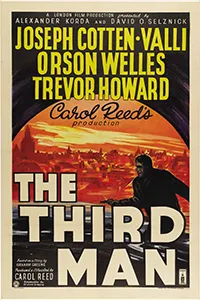
Classic film noir set in post-WWII Vienna, where a writer investigates the mysterious death of his friend.
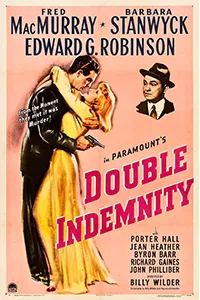
A gripping film noir about a seductive woman who convinces an insurance salesman to plot a murder.

This classic film noir follows private detective Philip Marlowe as he investigates a complex case involving a wealthy family.